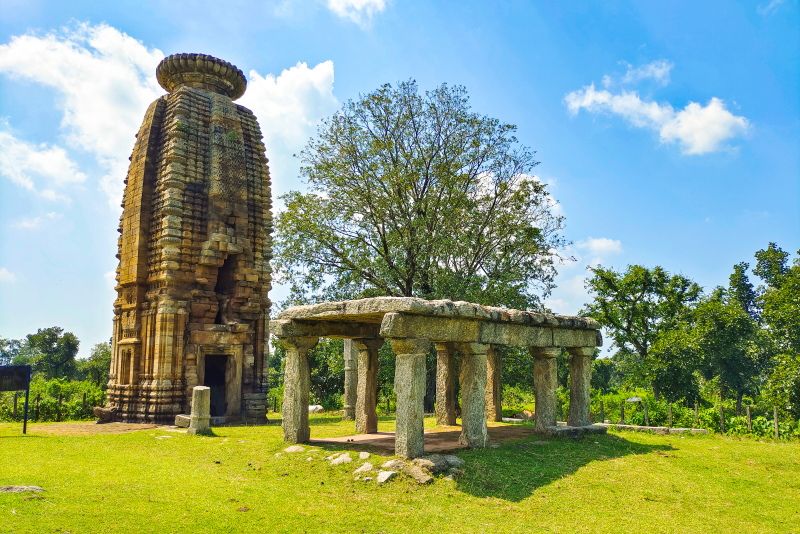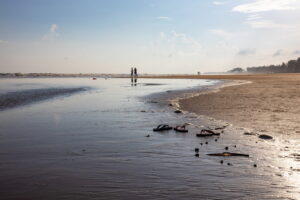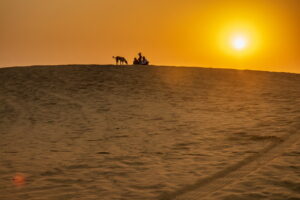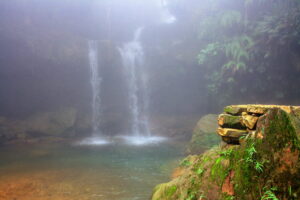In the 11th and 12 centuries AD, the Jain people settled around Damodar and other rivers originating from the Chotonagpur Plateau and constructed many temples on the eastern banks of the rivers. The majority of the same Jain settlement changed their religion with time. They initially converted to Shaivism and then again to Islam with the rise of the Mughal Dynasty in Delhi and the new nawabs of Bengal in the 15th and 16th centuries. As a result, those temples also changed their identity with the change of deity. The same Jain temples became Hindu temples with time until they were vandalised by the attacks of soldiers of the Delhi Sultanate. And eventually, they got lost in time and covered with forest until a few of them were discovered in dilapidated states. The temples of Deulghata, Para, Pakbira and Banda still bear shreds of evidence of that period.
Pin the image to save the post and read it later!
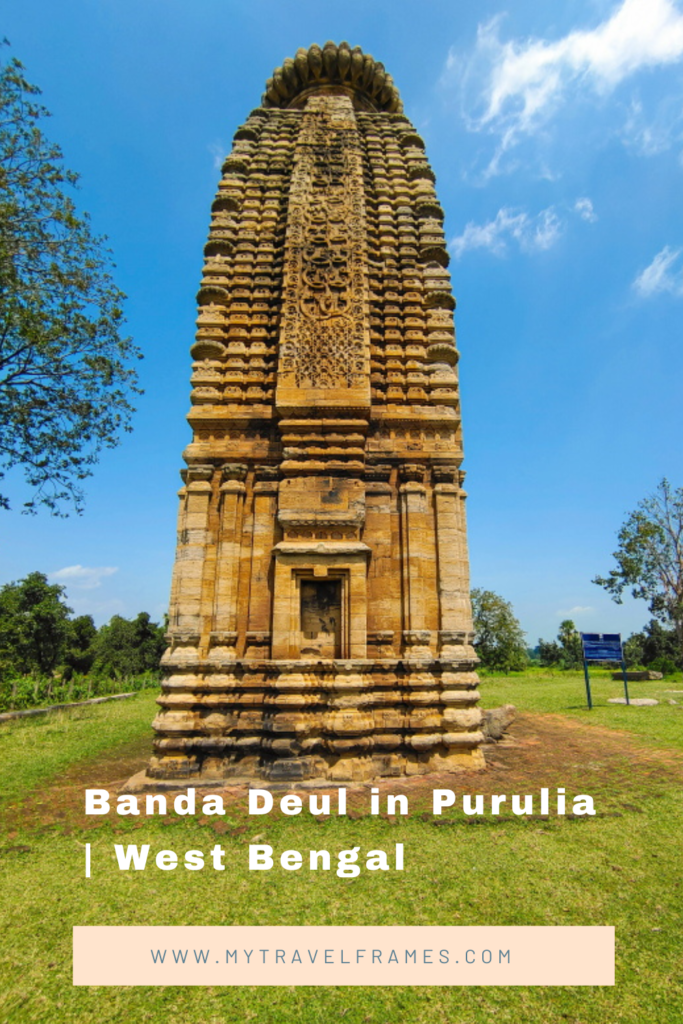
Table of Contents
About
Banda Deul is located in Banda village (also known as Deulghera) in the Raghunathpur II block in the Purulia district in West Bengal. In 1872, archaeologist J.D.Belgar discovered this temple covered in thick vegetation. The forest surrounding the temple was cleared, and it started drawing the attention of historians and scholars. It is now an ASI-listed monument and is taken care of by the Archeological Survey of India (ASI).
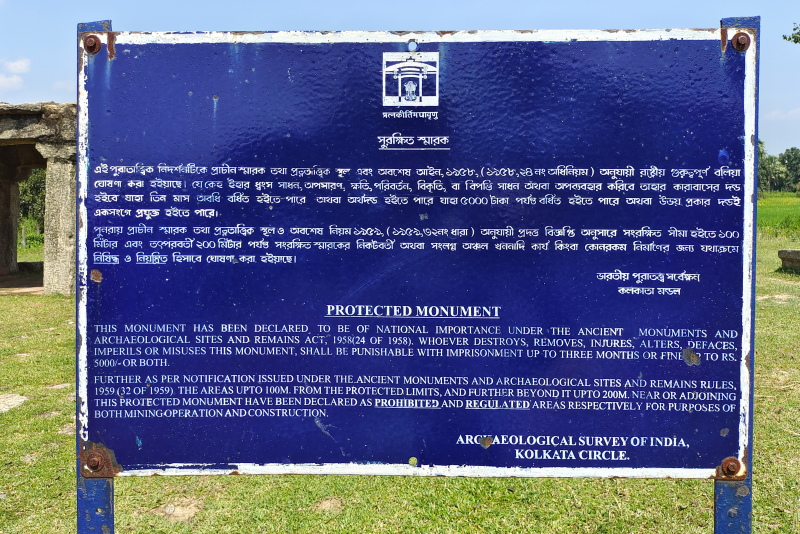
History
Like other Deuls in the Rarh region (known as Vajjrabhumi in the 6th century AD), Banda Deul was built between the 11th and 13th centuries. The majority of the inhabitants of this region were followers of Jainism. Jainism came to this region with the traders from western India who settled there, seeing the mineral-rich land. The local chieftains also started to follow these people for the sake of trading, and the major religion became Jainism.
With the patronage of Anantavarman Chodaganga Deva, the king of the Eastern Ganga Dynasty, these local traders and chieftains built many Jain temples then. The architecture of all these temples was influenced by the Odia Rekh Deul style.
Read more: Deulghata Temples in Purulia
Centuries went by, and people of that same region gradually became engaged in Shaivism and Hinduism as the Eastern Ganga Dynasty was itself a strong follower of Hinduism. And these same Jain temples gradually became Hindu temples with new stucco on walls and statues of Hindu gods and Goddesses inside the deuls.
This tradition continued until the Tughlaq Dynasty army started ransacking the western part of Bengal and forced people to convert to Islam. Many temples were destroyed completely, and many were damaged. The few remaining temples became completely covered with vegetation and surrounded by growing forests. They lost their importance as Islam became the dominant religion in subsequent centuries and completely forgot their existence.
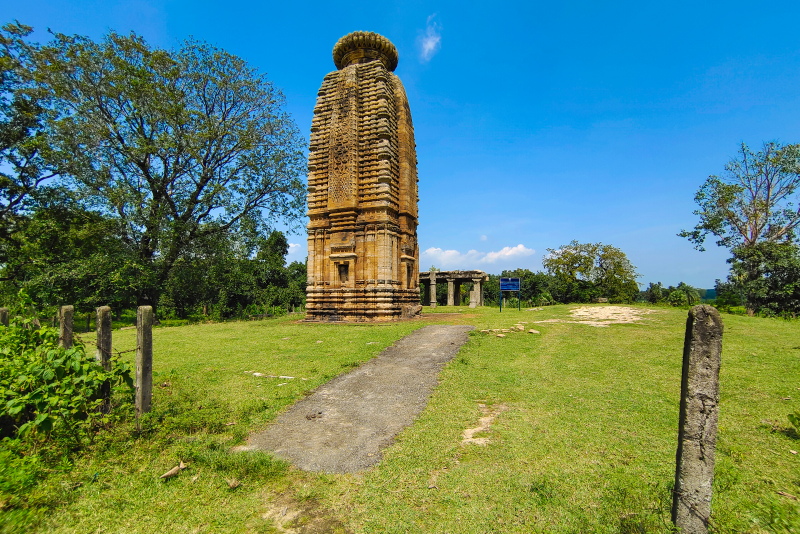
In the mid-nineteenth century, these temples again came into the limelight when British surveyors and archaeologists started to draw a map and keep records of the region. The forests were cleared gradually, temples were rediscovered, photographs were taken, measurements were made, and details of architecture were kept in records.
Eventually, the damaged temples were tried for restoration a century later, and the Archaeological Survey of India started caring for a few of them. Luckily, Banda Deul is somehow preserved close to its original form compared to other Deuls of the same period.
Architecture
Banda Deul is like others found in the adjacent regions, made of sandstone in the rekha deul style. A sanctum (garbhagriha) is covered by a tower (shikara) above. The base of the temple is elevated and square-shaped. The stones are clumped on one after another with the help of some thin indigenous mixture of clay, lime and biological oils.
The sanctum is square-shaped without any deity, which is shifted to a nearby temple, as locals believe. The main door is north facing. The panel around the front door has stucco of postures of dancers and musicians.
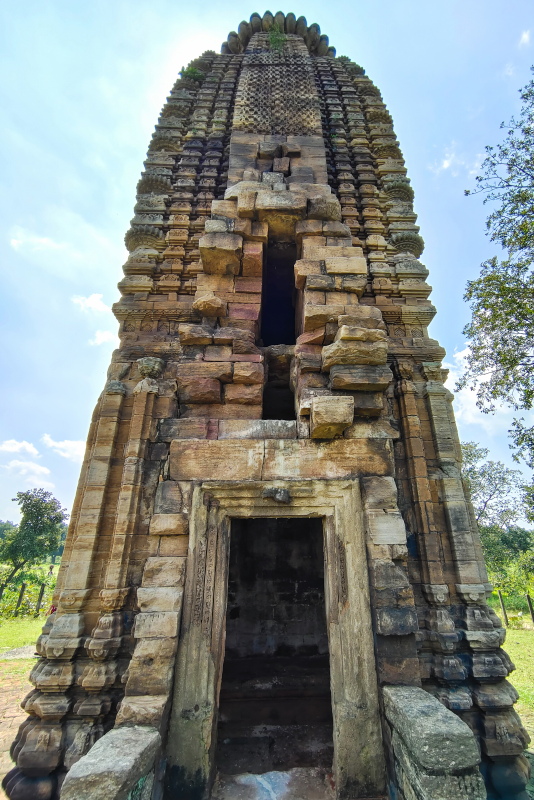
The shikara is straight upwards except sudden smooth curve inwards near the top with yet intact amlaka decoration above it. There is a long flat panel at the midline of all four sides of the tower. The panels have interlocking motifs of flowers, petals, and a few other decorative designs. Although the motifs are mostly preserved in Banda Deul, the quality of the work is less attractive than in some other Deul temples nearby.
The lower portion of the eastern wall has a crocodile head-shaped stone, which was used as a water outlet. It may be used to drain used water from the sanctum or as an outlet for circulating water around the sanctum to keep the inner sanctum cool. There is an elevated platform resting on eight pillars located near the main temple. It is assumed that it was the porch in front of the temple.
The natural location of this temple adds more to its visual appearance. The large Palash trees around the temple complex make the whole place a gorgeous vista for the eyes during Spring when the red Palash flowers are in full bloom.
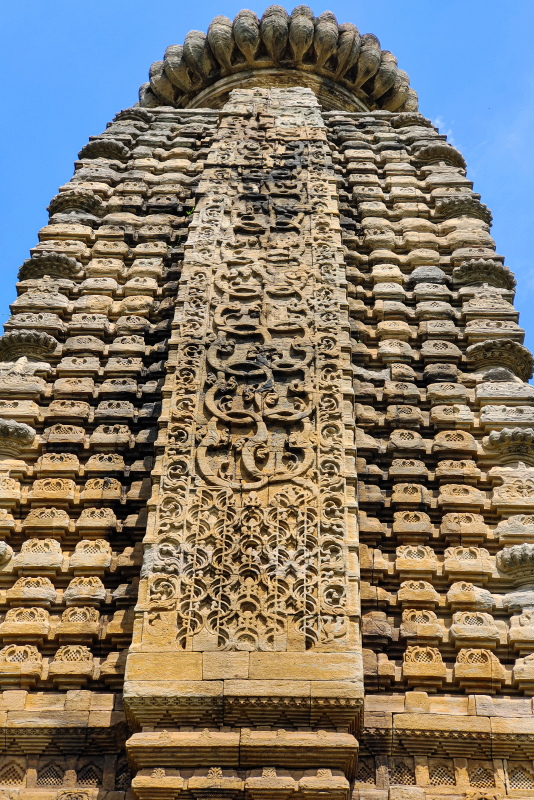
How to reach
Banda Deul is 40 km from Purulia Town, 20 km from Adra Junction station and 30 km from Garhpanchkot. A visit to Banda Deul can be easily done during your stay at Garhpanchkot or Baranti.
Rail
The nearest major rail station is Adra Junction. Howrah – Chakradharpur Passenger (58011 HWH CKP Passenger) is the best train available from Kolkata, and you can reach Adra by 5 am. Banda Deul is another 40 minutes drive from Adra Junction station.
The other two popular trains that can take you to Adra Junction or Purulia are the 12827 Howrah-Purulia Express and the 12883 Rupashi Bangla Express.
Road
There are buses from Kolkata to Purulia town, both private buses and SBSTC buses. They usually run via Asansol. One can get down at Raghunathpur. From Raghunathpur, Banda Deul is 20 minute drive.
By car from Kolkata, one can drive via Arambagh, Bishnupur, and Bankura or take the NH2 until Durgapur or Raniganj. From Durgapur, you can take a left and reach Raghunathpur via Bankura. From Raniganj, the road goes via Mejia and Saltora.
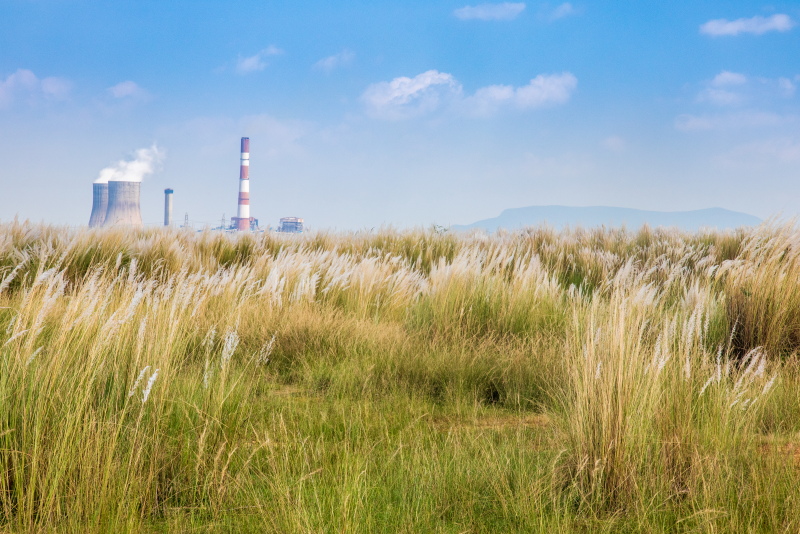
Where to stay
There are a few private hotels and lodges in Raghunathpur. The facilities are basic. You can also stay at Joychandi Pahar Youth Hostel, run by West Bengal Youth Department. This property is near Raghunathpur town. A few resorts are available in Garhpanchkot and Baranti, from where you can also plan your Banda trip. And finally, plenty of accommodation options are available at different budgets in Purulia town, which is an hour’s drive from Banda.
When to go
The best time to visit is during spring when surrounding Palash trees are in full bloom. You can also visit during autumn when the sky is clear, the greeneries are abundant, and on your way from Raghunathpur to Banda, you will see fields covered with white Kaas flowers. The Santaldihi Thermal Power Plant looks beautiful on the backdrop of these white Kaash flowers. Do not go there during monsoon as there is no road from Cheliyama village to the Deul, and one has to drive or walk on an open field to reach the gate.
Where to eat
There are a few eateries and restaurants in Raghunathpur town where you can have your meal. These restaurants are all located on both sides of Raghunathpur-Purulia Road near the main Raghunathpur market.
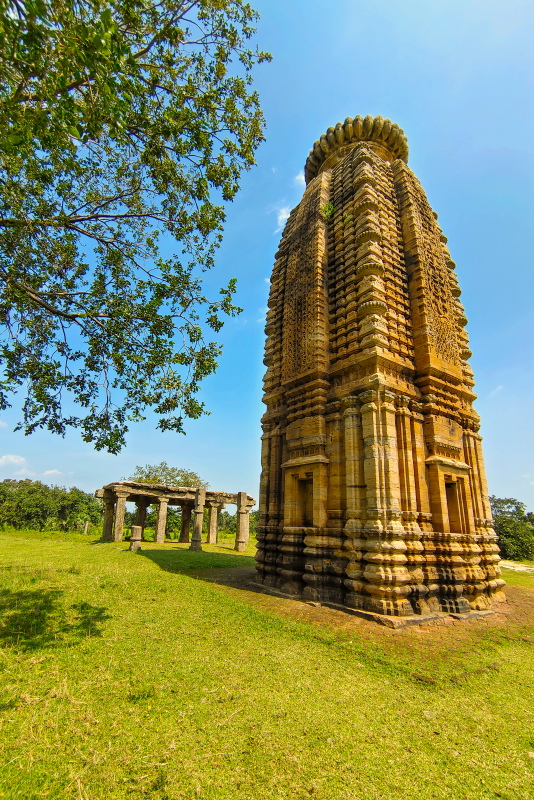
Nearby places to visit
- Terracotta Temple in Cheliyama village
- Temples in Para
- Submerged temples in Telkupi
- Joychandi Pahar
- Garhpanchkot and Panchkot Temple
- Baranti Lake
